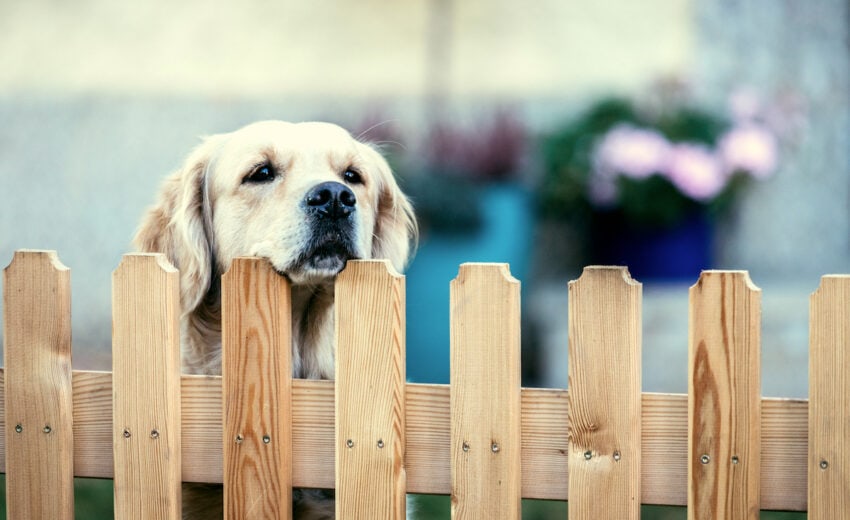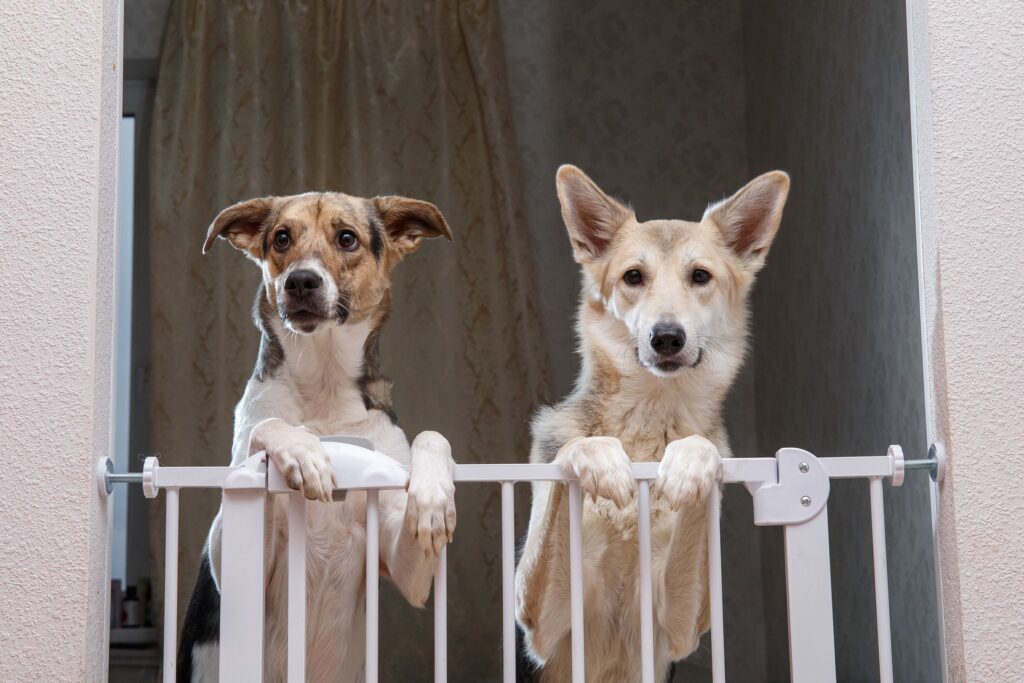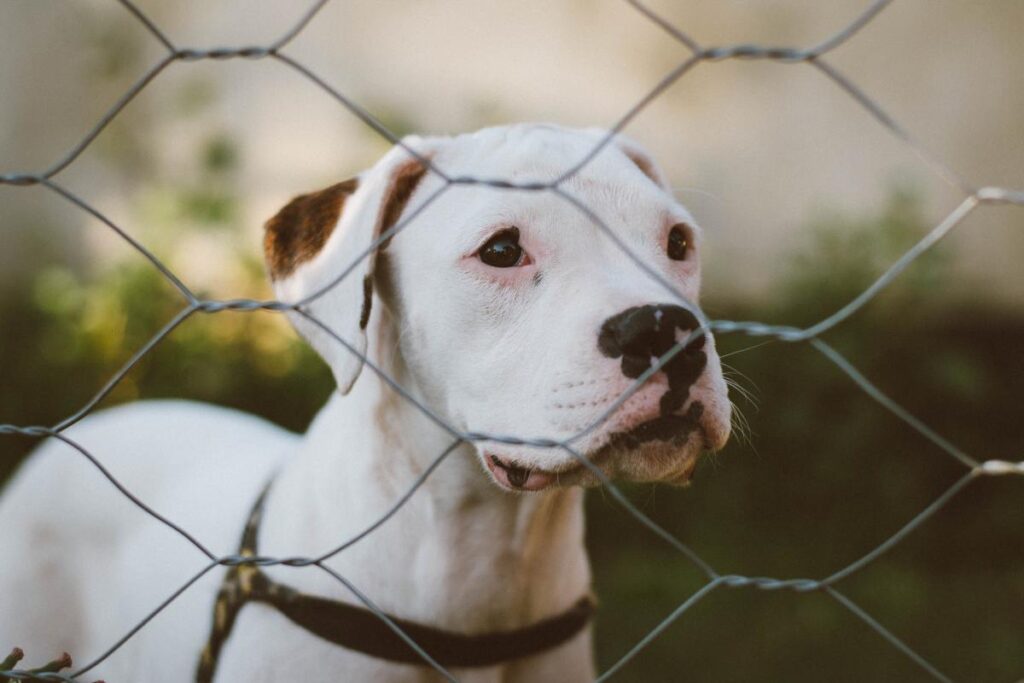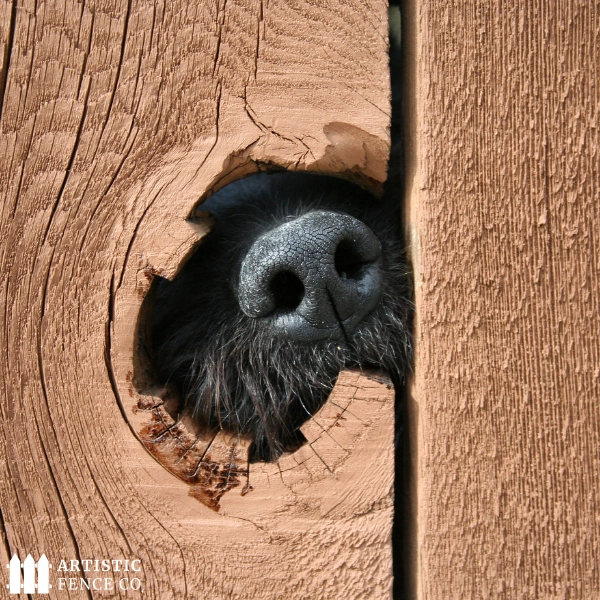Have you ever wondered about the perfect combination of pets and fences? Well, you’re in the right place! At my blog, “fencedude.com,” I cover all things fences, and today’s topic is all about finding the perfect fence for pet owners. From different types to suitable materials, I’ll dive into the details and help you make an informed decision for your furry friends.
When it comes to pets, safety is of utmost importance. That’s why it’s crucial to choose the right fence that keeps them secure within your property. In my upcoming posts, I’ll explore various fence types such as wooden, chain-link, vinyl, and metal fences. We’ll discuss the pros and cons of each type, examining their durability, maintenance requirements, and aesthetic appeal.
Not only will I cover the different fence types, but I’ll also address the importance of selecting the appropriate size and shape based on your specific needs. Whether it’s keeping your small dog contained or providing a spacious area for your active Labrador to roam, I’ve got you covered. Together, we’ll consider factors like property size, desired level of enclosure, and architectural considerations to find the perfect fit.
Stay tuned for my future posts, where I’ll provide valuable knowledge, practical advice, and answer the most common questions about pet-friendly fences. From concerns about digging and jumping to the best fence height and material for pet safety, I’ll address them all. So buckle up and get ready to become an expert on pets and fences!
(10 common questions and answers about pet-friendly fences will be provided at the end of this article in table format)
Pets and Fences: Finding the Perfect Combination
Pets are an important part of our families, bringing joy, love, and companionship to our lives. As responsible pet owners, it’s crucial to ensure their safety and well-being, especially when it comes to outdoor activities. One effective way to keep our furry friends secure is by having a suitable fence for our property. In this article, we will explore the different types of fences available and discuss considerations to keep in mind when choosing the perfect fence for your pets.
Types of Fences
Wooden Fences
Wooden fences are a classic choice for many homeowners, offering both security and aesthetic appeal. They can be customized to fit any style or design preference, making them a versatile option. However, it’s important to note that wooden fences may require regular maintenance to prevent rotting, warping, or damage from pests. Common types of wood used for fences include cedar, pine, and redwood.
Chain-link Fences
Chain-link fences are known for their durability and affordability. They are often used to enclose larger areas, such as backyards or commercial properties, as they provide a clear view of the surroundings. However, these fences may not offer much privacy, and some pets may be able to squeeze through the gaps. Adding privacy slats or mesh can help address this issue.
Vinyl Fences
Vinyl fences are low-maintenance and long-lasting, making them a popular choice among pet owners. They are resistant to rot, rust, and pests, and can withstand harsh weather conditions. Vinyl fences are available in various styles and colors, allowing you to customize them to match your property’s aesthetics.
Metal Fences
Metal fences, such as wrought iron or aluminum, provide a timeless and elegant look while ensuring security for your pets. They are strong, durable, and often come in decorative designs. However, it’s important to note that some metal fences may require regular maintenance to prevent rusting. Additionally, metal fences may not be suitable for smaller pets who may be able to slip through the bars.
Composite Fences
Composite fences are a combination of wood fibers and recycled plastics, providing a durable and eco-friendly alternative. They are resistant to rot, insects, and fading, making them an attractive option for pet owners. Composite fences come in various styles and colors, offering versatility and customization options.
Bamboo Fences
Bamboo fences offer a natural and eco-friendly option for pet owners. They are durable, sustainable, and can add a touch of tropical charm to your property. Bamboo fences are available in various weaving techniques and designs, providing different levels of privacy and enclosure.
Wrought Iron Fences
Wrought iron fences are synonymous with elegance and sophistication. They offer both security and aesthetic appeal, making them a popular choice for pet owners. These fences are highly durable and require minimal maintenance. However, it’s important to ensure that the spaces between the bars are small enough to prevent pets from slipping through.
Aluminum Fences
Aluminum fences are lightweight, durable, and require minimal maintenance. They provide both security and aesthetic appeal, offering various styles and colors to suit your preferences. Additionally, aluminum fences are resistant to rust and corrosion, making them suitable for pet owners who live in humid or coastal areas.
Electric Fences
Electric fences can be an effective way to keep your pets within the boundaries of your property. They work by delivering a harmless electric shock when your pet crosses the boundary line. It’s important to note that electric fences should be used as a training tool and should never cause harm or distress to the animal. They require proper installation and periodic maintenance.
Farm Fences
Farm fences are designed to enclose larger areas and keep livestock secure. They are typically made of materials such as wood, wire, or metal and can vary in design and height depending on the needs of the farm. Farm fences should be sturdy and able to withstand the weight and pressure of animals.
Privacy Fences
Privacy fences are ideal for pet owners who value both security and seclusion. They provide a barrier between your property and the outside world, minimizing distractions and potential dangers for your pets. Privacy fences are available in various styles and materials, allowing you to choose the level of privacy that suits your needs.
Picket Fences
Picket fences are a classic choice for adding charm and character to your property while keeping your pets safe. They are typically made of wood and consist of evenly spaced vertical boards supported by horizontal rails. Picket fences provide a clear boundary without completely obstructing the view.
Pool Fences
If you have a pool in your backyard, it’s crucial to have a fence that meets safety standards. Pool fences should be made of materials that are both durable and resistant to water damage. They should also be high enough to prevent unauthorized access and incorporate a locking mechanism. Check with local regulations to ensure compliance.
Decorative Fences
Decorative fences can enhance the aesthetics of your property while maintaining a level of security for your pets. They come in various designs, materials, and heights, allowing you to create a unique and appealing look. Decorative fences can be made of wood, metal, vinyl, or composite materials, depending on your preferences.

Considerations when Choosing a Fence
When selecting the right fence for your pets, there are several considerations to keep in mind. It’s important to assess your specific needs, preferences, and the unique characteristics of your property. Here are some factors to consider:
Property Size
The size of your property will play a significant role in determining the type and size of fence that is suitable. Larger properties might require taller or longer fences to provide adequate security and containment for your pets.
Desired Level of Enclosure
Consider how enclosed you want your property to be. Some pet owners prefer open fences that allow visibility, while others prioritize privacy and opt for solid barrier fences.
Architectural Considerations
Take into account the architectural design of your property when choosing a fence. Ensure that the fence complements the overall aesthetics and style.
Budget
Establish a budget for your fencing project. Different types of fences have varying costs, so it’s important to balance your needs with what you can afford.
Maintenance Requirements
Consider the level of maintenance you are willing to undertake for your fence. Some fences require regular cleaning, painting, or staining to maintain their appearance and durability.
Durability
Assess the durability of the fence materials you are considering. It’s important to choose a fence that can withstand the elements and the activities of your pets.
Aesthetic Appeal
Choose a fence that enhances the overall visual appeal of your property. Consider the materials, colors, and design options available.
Security Needs
Determine the level of security required for your pets. Some fence types offer higher levels of security, while others prioritize aesthetics or containment.
Climate Factors
Take into account the climate in your area, as different fence materials may react differently to various weather conditions. Some materials may be more prone to rotting or fading in extreme heat or cold.
Local Regulations
Ensure that you comply with local regulations and guidelines regarding fencing, especially if you live in a planned community or have specific neighborhood restrictions.
By carefully considering these factors, you can make an informed decision about the best fence for your pets that will offer security, containment, and peace of mind.

Wooden Fences
Characteristics and Advantages of Wooden Fences
Wooden fences have been a popular choice among homeowners for their timeless appeal and versatility. They offer numerous advantages, including:
-
Natural Beauty: Wooden fences add a warm and inviting aesthetic to any property. They blend well with both traditional and modern architectural styles, providing a natural and organic feel.
-
Versatility: Wooden fences can be customized to fit any design or style preference. They can be stained or painted in various colors to match the exterior of your home.
-
Privacy: Wooden fences can provide excellent privacy, especially when built with solid panels. They create a physical barrier that prevents outsiders from seeing into your property.
-
Sound Absorption: Wooden fences can help reduce noise levels by acting as a sound barrier. This can be particularly beneficial if you live near a busy street or noisy neighbors.
-
Durability: When properly cared for and maintained, wooden fences can last for many years. Rot-resistant wood species, such as cedar and redwood, are commonly used to enhance durability.
Different Types of Wood for Fences
Not all wood is created equal when it comes to choosing a fence material. Different wood species have unique characteristics and levels of resistance to rot, pests, and weather elements. Here are some common types of wood used for fences:
-
Cedar: Cedar is a popular choice for wooden fences due to its natural resistance to rot, decay, and insect damage. It has a pleasant, aromatic smell and provides a rich, reddish-brown color when left untreated.
-
Pine: Pine is an affordable and readily available option for wooden fences. However, it is less durable than cedar and may require more maintenance over time.
-
Redwood: Redwood is known for its natural beauty, durability, and resistance to rot and insects. It has a rich, reddish tone that weathers to an attractive gray finish if left untreated.
-
Cypress: Cypress is a durable and rot-resistant wood often used in humid climates. It has a light golden color that can be preserved with regular staining or left to weather naturally.
-
Douglas Fir: Douglas Fir is a strong and versatile wood with a reddish-brown color. It is less resistant to rot and decay than cedar or redwood and may require more maintenance.
Maintenance Tips for Wooden Fences
To keep your wooden fence in optimal condition, regular maintenance is essential. Here are some maintenance tips to prolong the life of your wooden fence:
-
Clean regularly: Remove dirt, debris, and moss from your fence by using a mild detergent or a specially formulated wood cleaner. Scrub gently with a soft brush and rinse with water.
-
Stain or paint: Applying a stain or paint can enhance the appearance and protect the wood from weather damage. Choose a high-quality product that is specifically formulated for exterior wood.
-
Seal cracks and splits: Check your wooden fence regularly for any cracks or splits. Fill them with an appropriate wood filler or sealant to prevent further damage.
-
Trim vegetation: Trim back any plants, vines, or tree branches that may be leaning against or growing into your fence. This will prevent moisture buildup and potential damage to the wood.
-
Protect against pests: Inspect your fence for signs of termites or other wood-eating pests. If necessary, treat the affected areas with an appropriate pesticide or consult a professional for assistance.
Choosing the Right Wooden Fence for Your Needs
When choosing a wooden fence for your pets, there are a few factors to consider:
-
Height: Ensure that the fence is tall enough to prevent your pets from jumping or climbing over it. The height will depend on the size and abilities of your pets.
-
Spacing between boards: If you have small pets, make sure the spaces between the boards are narrow enough to prevent them from slipping through.
-
Privacy vs. openness: Determine whether you prioritize privacy or an open view. Solid panel fences provide maximum privacy, while picket or lattice designs offer a more open feel.
-
Maintenance requirements: Consider the level of maintenance you are willing to undertake. Some wood species require more maintenance than others, so choose accordingly.
-
Budget: Wood fences can vary in cost depending on the type of wood and design. Set a budget that aligns with your preferences and needs.
Common Questions about Wooden Fences
- Are wooden fences suitable for all types of pets?
- Wooden fences can be suitable for many types of pets, including dogs, cats, and even some smaller animals. However, it’s important to choose the right height and spacing between boards to prevent pets from escaping.
- How long do wooden fences typically last?
- The lifespan of a wooden fence depends on several factors, including the type of wood, maintenance, and exposure to the elements. With proper care, a well-maintained wooden fence can last anywhere from 20 to 30 years or more.
- Are wooden fences difficult to install?
- Installing a wooden fence can be a DIY project for those with basic carpentry skills. However, it may be best to hire a professional for more complex designs or larger properties.
- Do wooden fences require regular staining or painting?
- While it’s not necessary to stain or paint a wooden fence, doing so can enhance its appearance and protection against weather damage. The frequency of staining or painting will depend on the type of wood and climate.
- How do I prevent my wooden fence from rotting?
- To prevent rotting, it’s important to maintain a good drainage system around the fence posts. Regularly check for any signs of damage or rot and address them promptly.
- Can I use a power washer to clean my wooden fence?
- While using a power washer can help remove dirt and grime, it should be used with caution to avoid damaging the wood. Use a low-pressure setting and keep the nozzle at a safe distance from the fence.
- Can I add a decorative element to my wooden fence?
- Absolutely! Wooden fences can be customized with various decorative elements, such as lattice tops, finials, or scalloped edges. These additions can enhance the aesthetic appeal of your fence.
- Are wooden fences eco-friendly?
- Wood is a renewable and natural resource, making wooden fences an eco-friendly option. However, it’s important to choose sustainably sourced wood or consider alternatives such as composite materials.
- Can I install a wooden fence on uneven terrain?
- Wooden fences can generally be built on uneven terrain, but it may require some adjustments in post placement or panel sizing. Consulting with a professional can help ensure proper installation.
- Can I install a gate in my wooden fence?
- Yes, gates can be installed in wooden fences to provide entry and exit points. It’s important to choose a durable and secure gate that matches the style of your fence.
| Fence Type | Characteristics | Advantages |
|---|---|---|
| Wooden Fences | Natural beauty, versatility, privacy, sound absorption, durability | Customizable, blends well with different styles, reduces noise levels, long-lasting |
| Chain-link Fences | Durability, affordability, clear view of surroundings | Assists with property demarcation, low maintenance, enables visibility |
| Vinyl Fences | Low-maintenance, long-lasting, resistant to rot and pests | Customizable styles and colors, withstands harsh weather, easy to clean |
| Metal Fences | Timeless elegance, security, durability | Decorative designs, strong and long-lasting, minimal maintenance |
| Composite Fences | Durability, resistance to rot and insects, eco-friendly | Various styles and colors, low maintenance, sustainable alternative |
In conclusion, choosing the perfect fence for your pets involves considering their needs and safety, as well as your personal preferences and property requirements. Whether it’s a wooden fence for its natural beauty, a chain-link fence for affordability, or a vinyl fence for its low-maintenance properties, there are numerous options available to cater to your specific needs. By carefully assessing the different types of fences, considering the various factors, and conducting thorough research, you can find the ideal fence that will provide both security and peace of mind for you and your pets.

Common Questions about Fences:
- Can dogs dig under a chain-link fence?
- While it is possible for dogs to dig under a chain-link fence, you can prevent this by installing a dig guard or burying the bottom of the fence in the ground.
- How do I keep my fence clean?
- The cleaning method will depend on the type of fence material. For example, vinyl fences can be cleaned with a mixture of soap and water, while metal fences may require periodic rust removal and repainting.
- Can I install a fence on my property line?
- The installation of a fence on your property line may depend on local regulations and homeowner association rules. It’s important to consult with appropriate authorities before proceeding.
- How high should a fence be to contain a large dog?
- The height of the fence should be determined by the size and jumping abilities of your dog. Generally, a fence at least 6 feet tall is recommended for larger dogs.
- Can cats climb over a wooden fence?
- Cats are known for their agility and climbing skills. If you have a cat, consider adding a cat-proof barrier like a fence topper or a system of netting.
- Can I use an electric fence for my pet?
- Electric fences can be an effective containment option for some pets, but they should be used as a training tool and provide a safe and humane shock. Consult with a professional to ensure proper installation.
- Do I need a permit to install a fence?
- Permit requirements vary depending on your location and the type of fence you intend to install. Check with your local authority to determine whether a permit is necessary.
- How long does it take to install a fence?
- The duration of fence installation will depend on various factors such as the size of the property and the complexity of the design. It’s best to consult with a professional for an accurate timeline.
- Can I install a fence by myself or should I hire a professional?
- The decision to install a fence yourself or hire a professional depends on your level of experience, the complexity of the project, and local regulations. A professional can ensure proper installation and compliance with local codes.
- Can I customize the design of my fence?
- Many fence types, such as wooden and metal fences, offer customization options. You can add decorative elements, choose different colors or finishes, and select unique designs to personalize your fence.
References:
| FAQ | Answer |
|---|---|
| Can dogs dig under a chain-link fence? | While it is possible for dogs to dig under a chain-link fence, you can prevent this by installing a dig guard or burying the bottom of the fence in the ground. |
| How do I keep my fence clean? | The cleaning method will depend on the type of fence material. For example, vinyl fences can be cleaned with a mixture of soap and water, while metal fences may require periodic rust removal and repainting. |
| Can I install a fence on my property line? | The installation of a fence on your property line may depend on local regulations and homeowner association rules. It’s important to consult with appropriate authorities before proceeding. |
| How high should a fence be to contain a large dog? | The height of the fence should be determined by the size and jumping abilities of your dog. Generally, a fence at least 6 feet tall is recommended for larger dogs. |
| Can cats climb over a wooden fence? | Cats are known for their agility and climbing skills. If you have a cat, consider adding a cat-proof barrier like a fence topper or a system of netting. |
| Can I use an electric fence for my pet? | Electric fences can be an effective containment option for some pets, but they should be used as a training tool and provide a safe and humane shock. Consult with a professional to ensure proper installation. |
| Do I need a permit to install a fence? | Permit requirements vary depending on your location and the type of fence you intend to install. Check with your local authority to determine whether a permit is necessary. |
| How long does it take to install a fence? | The duration of fence installation will depend on various factors such as the size of the property and the complexity of the design. It’s best to consult with a professional for an accurate timeline. |
| Can I install a fence by myself or should I hire a professional? | The decision to install a fence yourself or hire a professional depends on your level of experience, the complexity of the project, and local regulations. A professional can ensure proper installation and compliance with local codes. |
| Can I customize the design of my fence? | Many fence types, such as wooden and metal fences, offer customization options. You can add decorative elements, choose different colors or finishes, and select unique designs to personalize your fence. |

